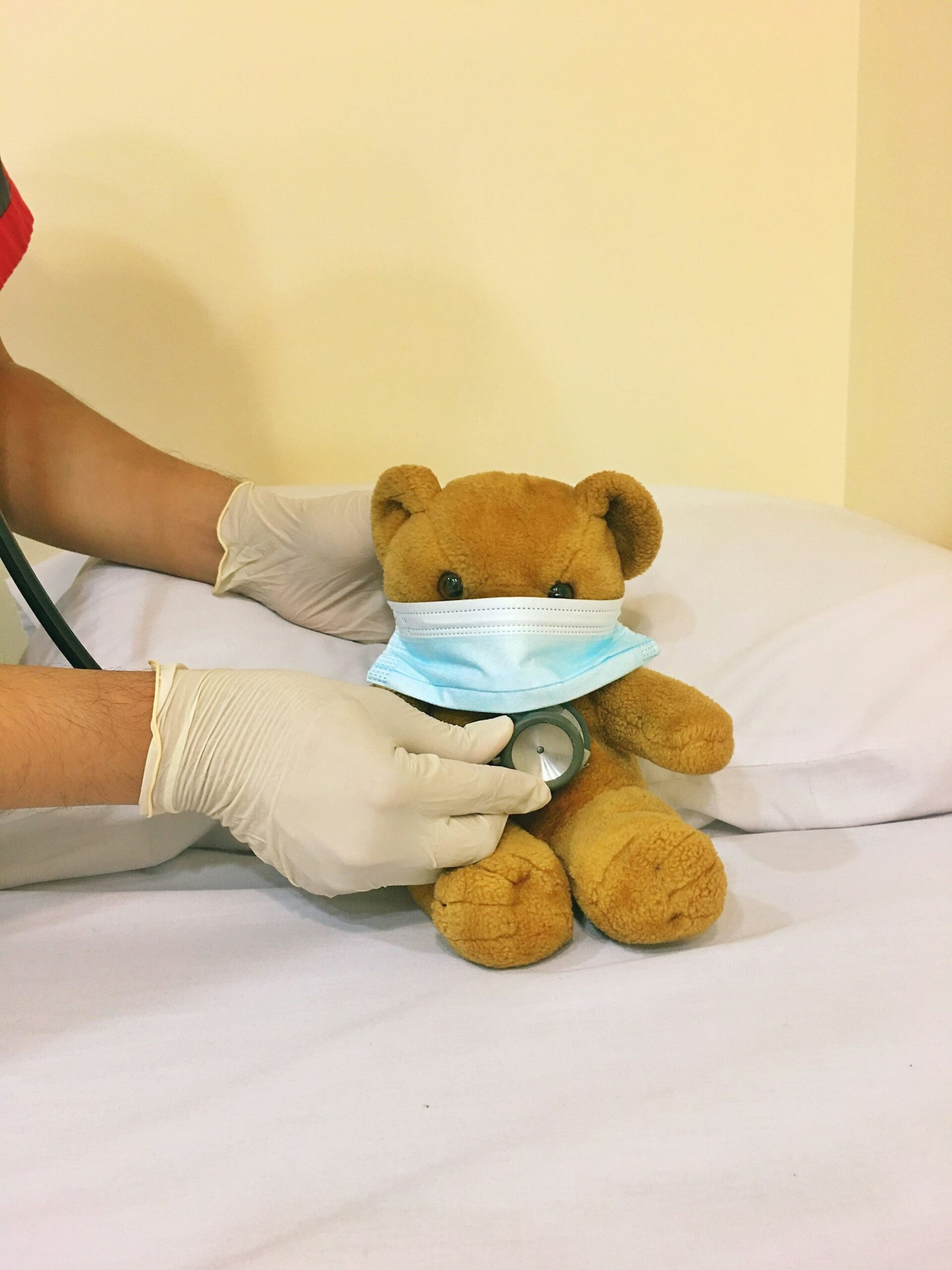Red cheeks, a sandpaper-like rash, the sudden spike in fever—few things can unsettle a parent quite like the appearance of scarlet fever in a child. You may find yourself questioning every symptom, seeking reassurance, and yearning for simple steps to restore calm. The worry is entirely understandable: not only does the phrase itself sound dramatic, but images of flushed faces and red rashes can ignite concern about both immediate comfort and long-term dangers. Fortunately, the landscape of medical progress has transformed scarlet fever from a historic menace into an illness that, while still disruptive, is eminently manageable with attentive care and modern medicine. Wondering what signs to watch for, how to soothe a miserable child, and when to pursue professional help? Let’s wade through the facts—examining causes, symptoms, treatments, risks, and actionable prevention tips—so you can feel informed, empowered, and ready to act with confidence.
What is scarlet fever? Facts every parent should know
Scarlet fever strikes primarily in childhood, propelled by the bacterium Streptococcus pyogenes (group A streptococcus), a microscopic organism adept at spreading silently from person to person via respiratory droplets—a lingering cough, a sneeze not quite caught, or the grasp of small, sticky hands on shared toys. Among its most memorable hallmarks? A sandpaper rash, vivid red and quick to appear, plus the iconic strawberry tongue—initially white-coated and later transformed into a bumpy field of crimson.
Most cases arise between ages 5 and 15, in environments where children live and learn together in close quarters. Outbreaks often echo through classrooms and daycare centers, especially in colder months. Babies under three rarely catch scarlet fever, shielded temporarily by maternal antibodies. The disease isn’t just a matter of superficial redness: it’s an orchestrated immune response to potent toxins secreted by certain bacterial strains, which explains why the symptoms can be both dramatic and systemic.
How scarlet fever develops and why it spreads so swiftly
Here’s where things get fascinating—and a touch alarming for anyone juggling multiple children during winter cold season. Once exposed, a child doesn’t typically feel ill immediately. The incubation period, that silent window, lasts one to five days. Suddenly, high fever, sore throat, and tender glands herald the main event, closely tailed by the characteristic rash.
Why do only some children get the rash while others—equally exposed—do not? Those striking red patches require infection with a toxin-producing strain of group A strep. The bacteria may live peacefully in the throat or on the skin, only turning malevolent when they unleash their arsenal of pyrogenic exotoxins, sparking an immune response that sets the stage for classic scarlet fever. Until antibiotic treatment begins, contagiousness endures—meaning every uncovered sneeze is a tiny act of inadvertent transmission. The solution? Rest at home, antibiotics as prescribed, and punctual, thorough handwashing for everyone in the household.
Recognizing the symptoms: when to suspect scarlet fever
The rash isn’t always first. Fever and sore throat are precocious, often joined by headache, chills, and occasionally abdominal pain or vomiting—especially alarming if your child is usually stoic. The rash—dense, red, rough to the touch—typically surfaces within 24–48 hours, creeping from body folds like elbows and armpits to the trunk, face, and limbs. The skin may appear intensely flushed except for a strangely pale area around the mouth. The tongue, after a stint under a white coating, reveals itself as bright red and bumpy—the famous strawberry tongue.
Other subtle signs include swollen, tender lymph nodes along the jawline and discomfort with swallowing. Once the fever recedes and the rash wanes, expect skin peeling on fingertips or toes, a harmless though sometimes unnerving aftermath.
Curiously, adults can contract scarlet fever, but their symptoms tend to be less severe or atypical—while toddlers may exhibit only low-key signs like fussiness or nasal symptoms, making vigilance all the more important.
Diagnosing scarlet fever: what to expect at the doctor’s office
A seasoned doctor often knows scarlet fever on sight, marrying the story—a child developing fever and sore throat followed by a sandpaper rash—with physical clues like the red tongue and enlarged glands. Yet, confirmation matters. The rapid strep test, a quick throat swab, offers answers within minutes, though false negatives occasionally occur. In uncertain cases, a throat culture (allowing bacteria to grow in a lab) clinches the diagnosis, even if it takes longer.
Why not simply rely on clinical judgment? The symptoms of scarlet fever mimic those of other childhood illnesses—Kawasaki disease, viral exanthems, and even allergic drug reactions can confuse the picture. Lab evidence of group A strep tips the balance, ensuring proper treatment and safeguarding against complications.
Treatment: antibiotics, comfort, and when to worry
Modern medicine has upended the history of scarlet fever: with penicillin or amoxicillin administered for ten days, the vast majority of children recover swiftly, their risk of long-term complications plummeting. For those with a penicillin allergy, alternatives include azithromycin, erythromycin, or clindamycin—although resistance to some of these can occasionally vex doctors.
Why insist on completing the entire course, even if symptoms vanish early? It’s not just about clearing the rash—the aim is to fully eliminate the bacteria, forestalling rare but significant immune complications like acute rheumatic fever or glomerulonephritis (inflammation of the kidneys).
At home, parents become comfort managers: offering plenty of liquids, soft foods that won’t inflame a sore throat, and acetaminophen to lower fever and soothe aches. Calamine lotion for itchy skin and short nails to prevent scratching are simple yet effective. Most importantly, keep your child away from school or daycare until they’ve had at least 24–48 hours of antibiotics and the fever subsides; only then does the risk of transmission notably diminish.
Call your medical provider immediately if you spot worrying signs: persistent high fever above 40°C (104°F), severe headaches, breathing difficulties, persistent vomiting, altered consciousness, or dehydration. Such symptoms can signal serious complications and demand rapid assessment.
Complications: rare, but why they matter
Untreated or poorly managed scarlet fever occasionally paves the way for other bacterial invasions: peritonsillar abscess, otitis media (middle ear infection), sinusitis, and pneumonia. Even more enigmatic are post-infectious complications. Sometimes, the immune response overshoots, leading to rheumatic fever (where joints and the heart are at risk) or post-streptococcal glomerulonephritis (inflammation of the kidneys).
The odds of such complications have dropped dramatically in the antibiotic era, but the importance of follow-through remains. Immune-compromised children, toddlers, and certain adults may experience more unusual or severe manifestations, underscoring the value of watchful follow-up.
Prevention: practical steps for families
No vaccine exists yet for group A streptococcus, so prevention hinges on daily actions—the small habits repeated over and over, often tested during school season.
- Hand hygiene: Teach children to wash with soap and water, before meals and after every trip to the bathroom, transforming an ordinary routine into a shield against invisible threats.
- Cough etiquette: Encourage coughing or sneezing into the elbow, not hands, to block the journey of airborne droplets.
- Isolate during illness: Keep affected children at home for at least 24–48 hours after antibiotics commence, limiting the circle of potential new cases.
- Clean the environment: Wipe down high-touch surfaces daily—doorknobs, toys, bathroom taps. Separate laundry for the unwell child where practical, and air out rooms regularly.
- Public health awareness: Engage with schools and communities to spot outbreaks early and spread accurate information, reducing anxiety and unnecessary measures.
Wondering about protecting vulnerable family members—like a pregnant parent or an elderly grandparent? Good hygiene, temporary isolation, and prompt antibiotics are your best defense.
The changing face of scarlet fever: lessons from past and present
A century ago, scarlet fever was a leading cause of child mortality, feared for its unpredictability and the aftermath of heart or kidney damage. The introduction of antibiotics—penicillin in particular—transformed medical outcomes. Today, the disease, though still attention-grabbing when it surfaces in the news (with periodic outbreaks from Asia to the UK), is typically short-lived and resolves well with appropriate care.
But the story isn’t static. New bacterial strains and the slow creep of antibiotic resistance have revived vigilance: prudent antibiotic use, continual research, and careful monitoring are all required. Scientists are exploring the superantigens—powerful toxins produced by group A strep—to advance vaccine development, though the diversity of strains poses a formidable hurdle.
Supporting families: reassurance, practical advice, and teamwork
Managing scarlet fever at home can feel daunting—the sudden onset, the discomfort, the isolation from school or friends. Yet, the essentials remain constant:
- Offer regular fluids; steer clear of juices if your child’s throat is sore.
- Choose soft foods—yogurt, ice cream, mashed vegetables—allowing comfort and nutrition with minimal strain.
- Trim nails and use antihistamines or calamine lotion for the rash.
- Encourage rest, gentle play, and lots of reassurance during the recovery phase.
Doctors, schools, and public health authorities each play roles—diagnosing, supporting, and communicating with families. When in doubt, lean on professional advice, particularly if symptoms change or fail to improve after a couple of days on antibiotics.
Questions about recurrence? Most children develop robust immunity to the toxins that trigger scarlet fever, making repeat episodes rare—though not impossible. Concerned about rejoining school? A full day or two on antibiotics, plus no fever, means your child can return safely, ready to resume normal activities.
Key takeaways
- Scarlet fever is a childhood infection caused by group A streptococcus, distinguished by a sandpaper rash, sore throat, and sometimes a striking “strawberry” tongue.
- Timely antibiotic therapy leads to rapid improvement; watch for symptoms and seek prompt guidance if complications develop.
- Good hygiene, home isolation during contagious periods, and completion of prescribed medication are the mainstays of preventing spread.
- Serious complications are rare today—due largely to effective antibiotics and better awareness—but early recognition and treatment are essential to safe recovery.
- Ongoing research explores how bacterial toxins shape the illness, with future hopes for preventive vaccines.
- Families are not alone: healthcare professionals, schools, and public health agencies are valued partners throughout the journey.
- For further guidance, personalized health tips, and free child health questionnaires, download the Heloa app and discover resources tailored to support you and your family through every season.
Questions Parents Ask
Can scarlet fever recur, and what should I watch for if it does?
While most children develop some immunity to the specific toxins responsible for scarlet fever, it’s possible—though uncommon—for a child to have the illness more than once. If scarlet fever appears to return, watch for similar symptoms: sudden fever, sore throat, a rough red rash, and a bumpy “strawberry” tongue. Sometimes, a different strain of the bacteria may cause a new episode. In these rare cases, it convient to consult your healthcare provider for evaluation and appropriate care. Rassurez-vous, with timely antibiotics, the risk of complications remains low, even for recurrences.
Is scarlet fever dangerous for adults or pregnant people?
Scarlet fever is more common in children, but adults—including pregnant individuals—can be affected too, sometimes with milder or atypical symptoms. For pregnant people especially, it’s naturel to be vigilant: while the illness itself usually isn’t severe, the fever or infection could contribute to extra discomfort or, rarely, complications. If you suspect scarlet fever while pregnant, n’hésitez pas à contacter un professionnel de santé. Most cases are manageable, and early treatment helps protect both you and your baby’s well-being.
How can I help my child feel more comfortable if they have scarlet fever?
Supporting your child’s comfort during recovery is essentiel. You can offer plenty of fluids to prevent dehydration, soft foods to ease sore throats, and gentle cooling if fever causes discomfort. Dressing your child in loose, breathable clothing and using fragrance-free moisturizers or calamine lotion on the rash may calm itching. If needed, paracetamol can help soothe fever and aches. Above all, lots of patience, affection, and calm reassurance will help your child feel safe and supported as they heal.
Further reading:




